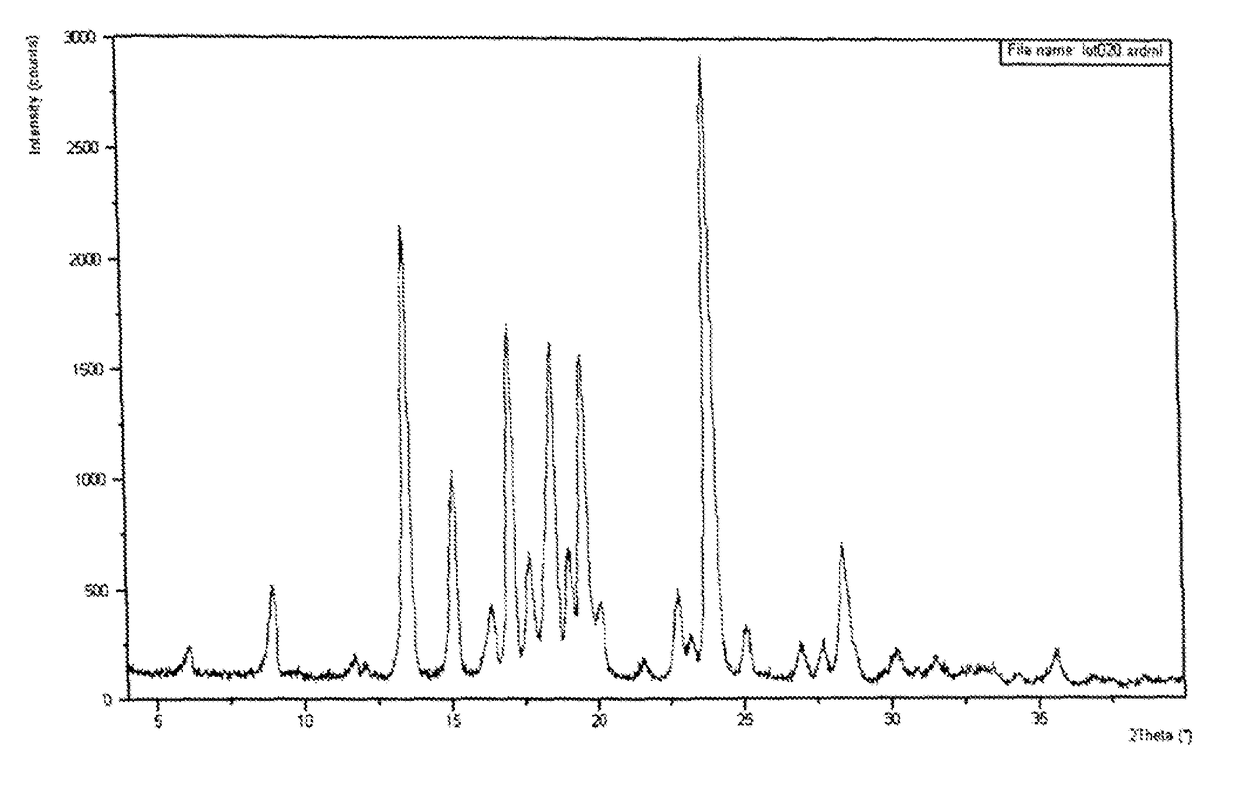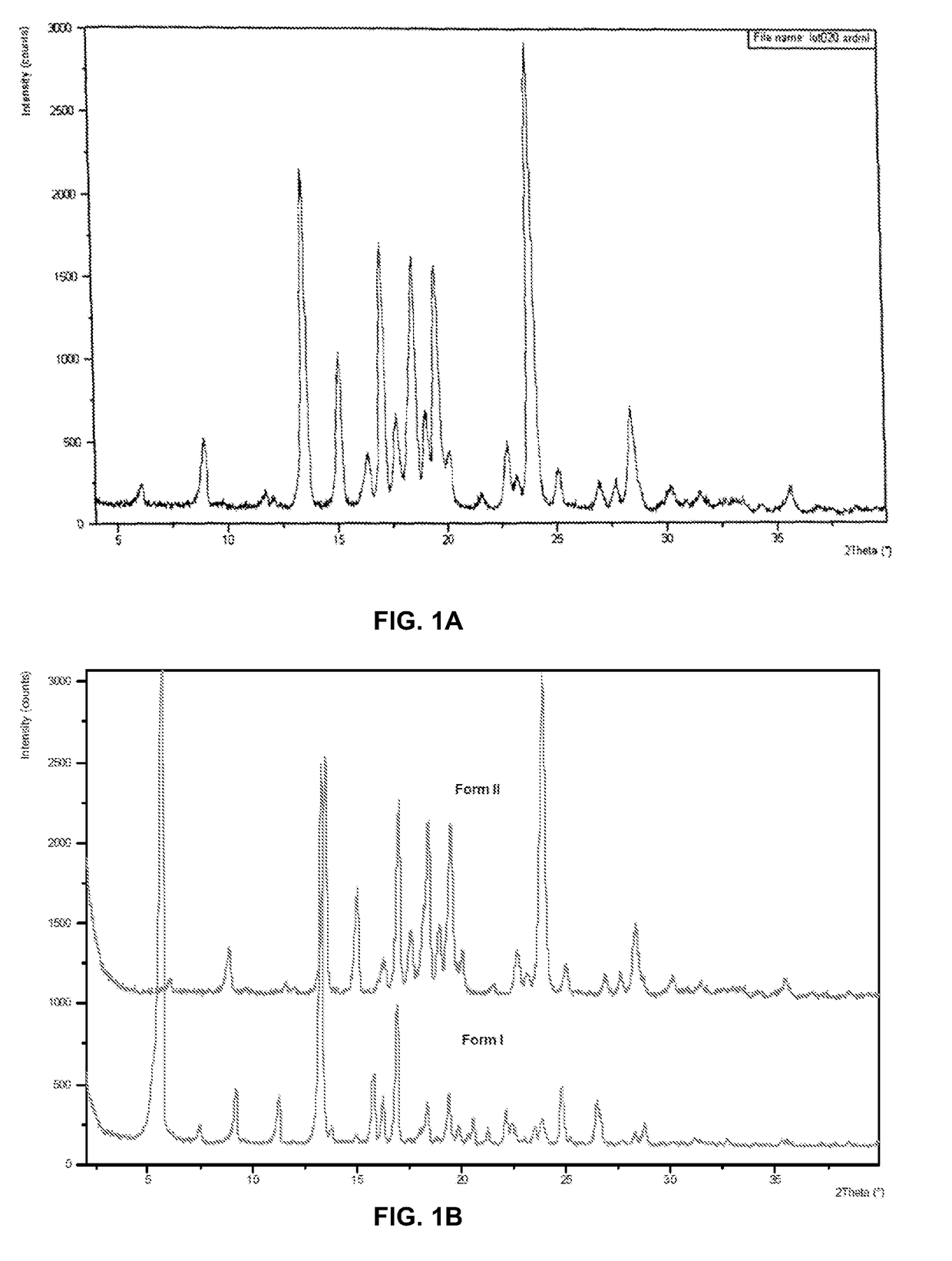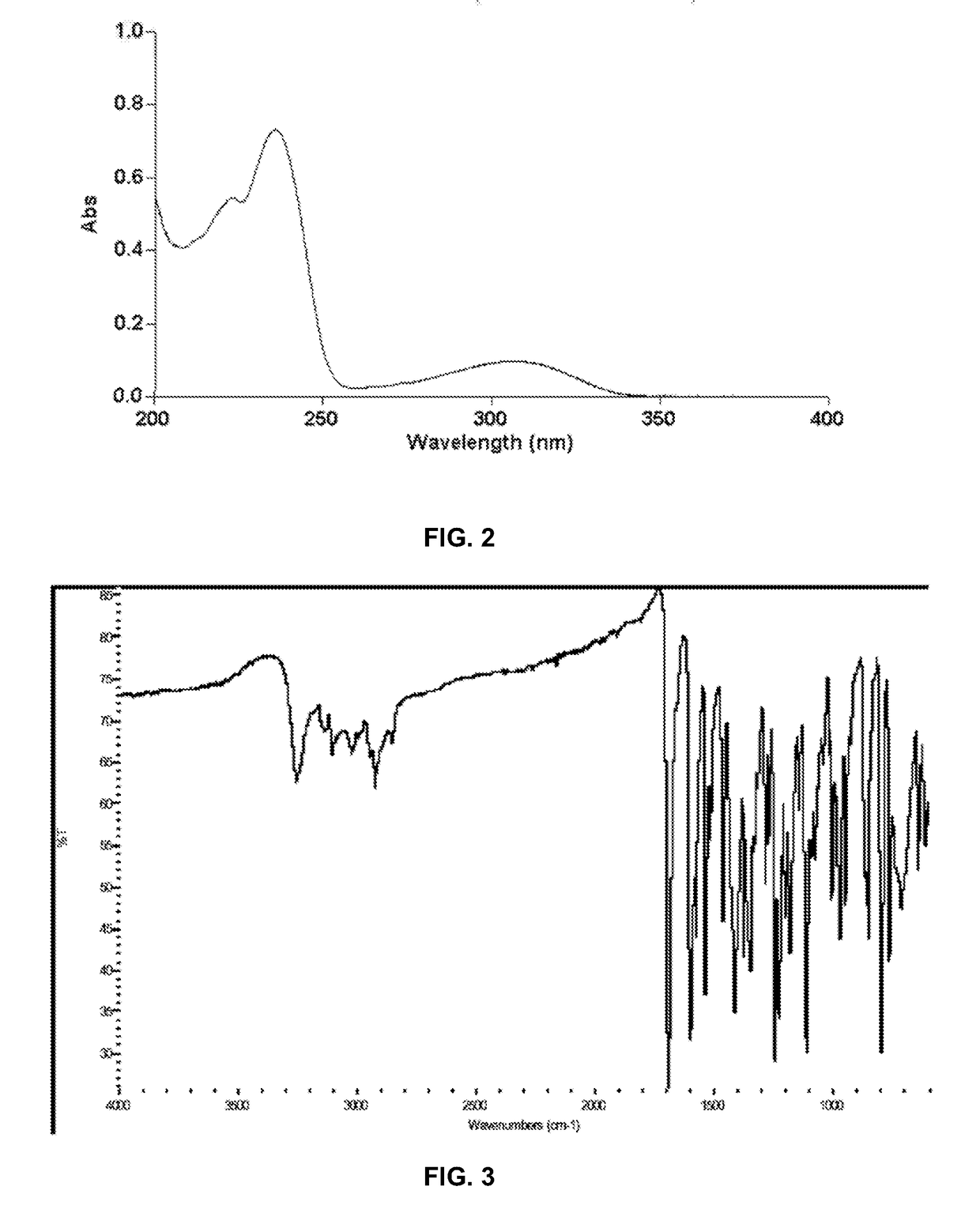Compounds, compositions and methods
a technology of compositions and compounds, applied in the field of compound compositions and methods, can solve the problems of not drawing definitive conclusions as to compound (i)'s potential efficacy or safety profil
- Summary
- Abstract
- Description
- Claims
- Application Information
AI Technical Summary
Benefits of technology
Problems solved by technology
Method used
Image
Examples
example 1
on of Compound (I) and Crystalline Form II
[0159]
Abbreviations used herein denote the following:[0160]ACN=acetonitrile[0161]AcOH=acetic acid[0162]BnBr=benzyl bromide[0163]CDI=1,1′-carbonyldiimidazole[0164]Darco G=activated charcoal[0165]DCM=dichloromethane[0166]DIPA=diisopropylamine[0167]DMF=dimethylformamide[0168]EtOAc=ethyl acetate[0169]HCl=hydrogen chloride[0170]iProAc=isopropyl acetate[0171]MeOH=methanol[0172]NaBH4=sodium borohydride[0173]NaCl=sodium chloride[0174]NaOH=sodium hydroxide[0175]NH3=ammonia[0176]Pd / C=palladium on carbon[0177][RhCODCl]2=chloro(1,5-cyclooctadiene)rhodium (I) dimer (also known as 1,5-cyclooctadienerhodium (I) chloride dimer, bis(1,5-cyclooctadiene)dirhodium (I) dichloride, di-μ-chlorobis[(1,2,5,6-η)-1,5-cyclooctadiene]dirhodium, rhodium (I) chloride 1,5-cyclooctadiene complex dimer, and [Rh(COD)Cl]2)[0178]RT=room temperature[0179]THF=tetrahydrofuran
Step 1
[0180]Compound 1 was treated with LDA and then reacted with DMF to produce an in situ aldehyde interm...
example 2
der Diffraction Pattern
[0188]Crystalline Form II of Compound (I) was characterized using X-ray powder diffraction (XRPD)(FIG. 1A). The XRPD pattern corresponds to an anhydrous form denoted as Form II, which is highly crystalline. In addition to Form II, Compound (I) can exist as another anhydrous polymorph, denoted as Form I. The XRPD patterns of these phases are shown in FIG. 1B. A slurry experiment was performed at room temperature by adding approximately equal proportions of the two anhydrous phases to methyl-tert-butyl ether. The XRPD of the filtered solids from the slurry showed phase conversion to Form II. XRPD analysis of solids recovered from heating Form I to 115° C. showed phase conversion to Form II. Based on these experiments, Form II is the thermodynamically stable form between room temperature and 121° C.
example 3
et Absorbance Spectrum
[0189]The ultraviolet (UV) absorbance spectrum of crystalline Form II of Compound (I) shown in FIG. 2 was obtained using a Cary 300 Bio UV-Vis spectrophotometer and methanol as diluent. The spectrum is characterized by maxima at 236±2 nm.
PUM
| Property | Measurement | Unit |
|---|---|---|
| 2-theta angle | aaaaa | aaaaa |
| 2-theta angles | aaaaa | aaaaa |
| 2-theta angles | aaaaa | aaaaa |
Abstract
Description
Claims
Application Information
 Login to View More
Login to View More - R&D
- Intellectual Property
- Life Sciences
- Materials
- Tech Scout
- Unparalleled Data Quality
- Higher Quality Content
- 60% Fewer Hallucinations
Browse by: Latest US Patents, China's latest patents, Technical Efficacy Thesaurus, Application Domain, Technology Topic, Popular Technical Reports.
© 2025 PatSnap. All rights reserved.Legal|Privacy policy|Modern Slavery Act Transparency Statement|Sitemap|About US| Contact US: help@patsnap.com



